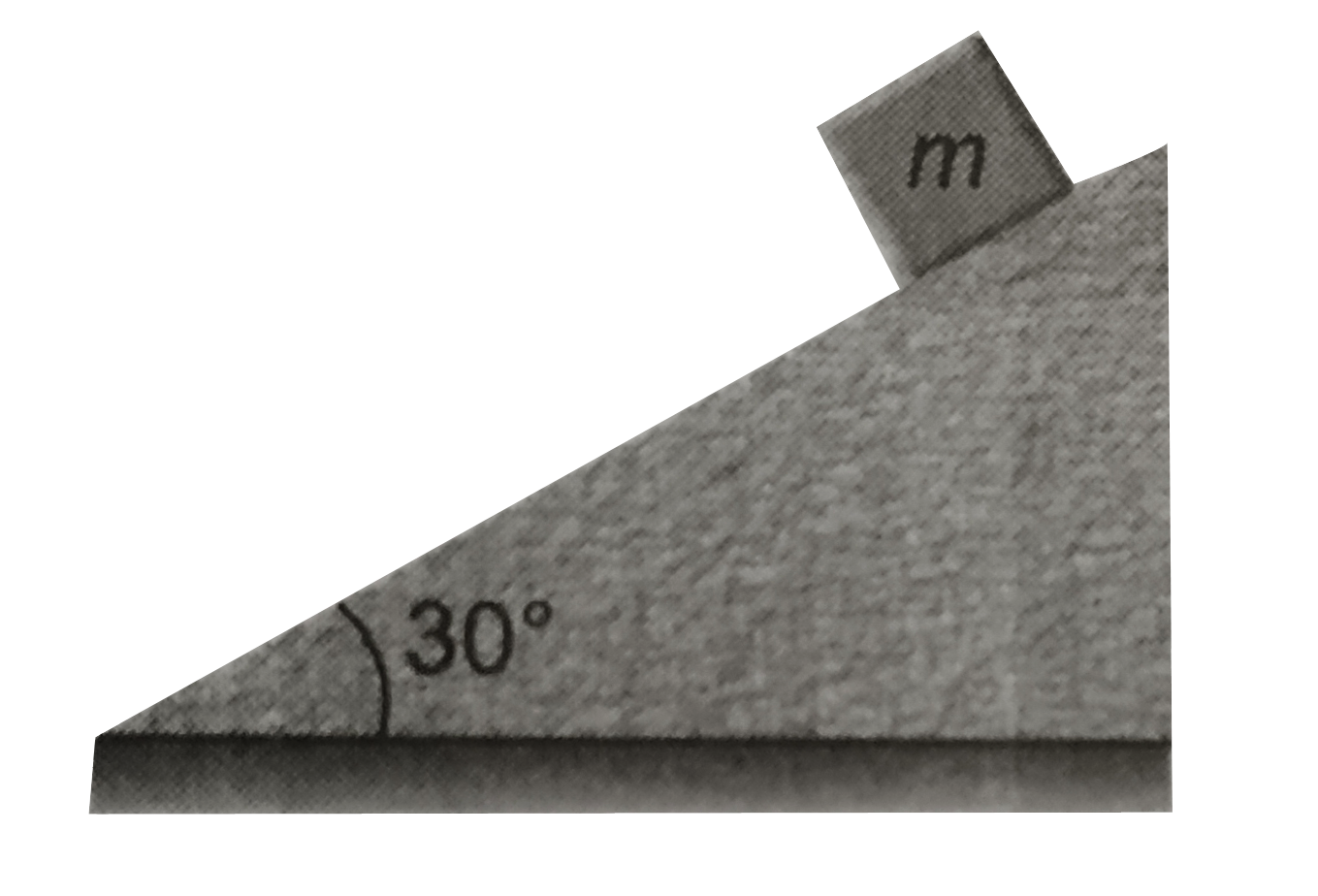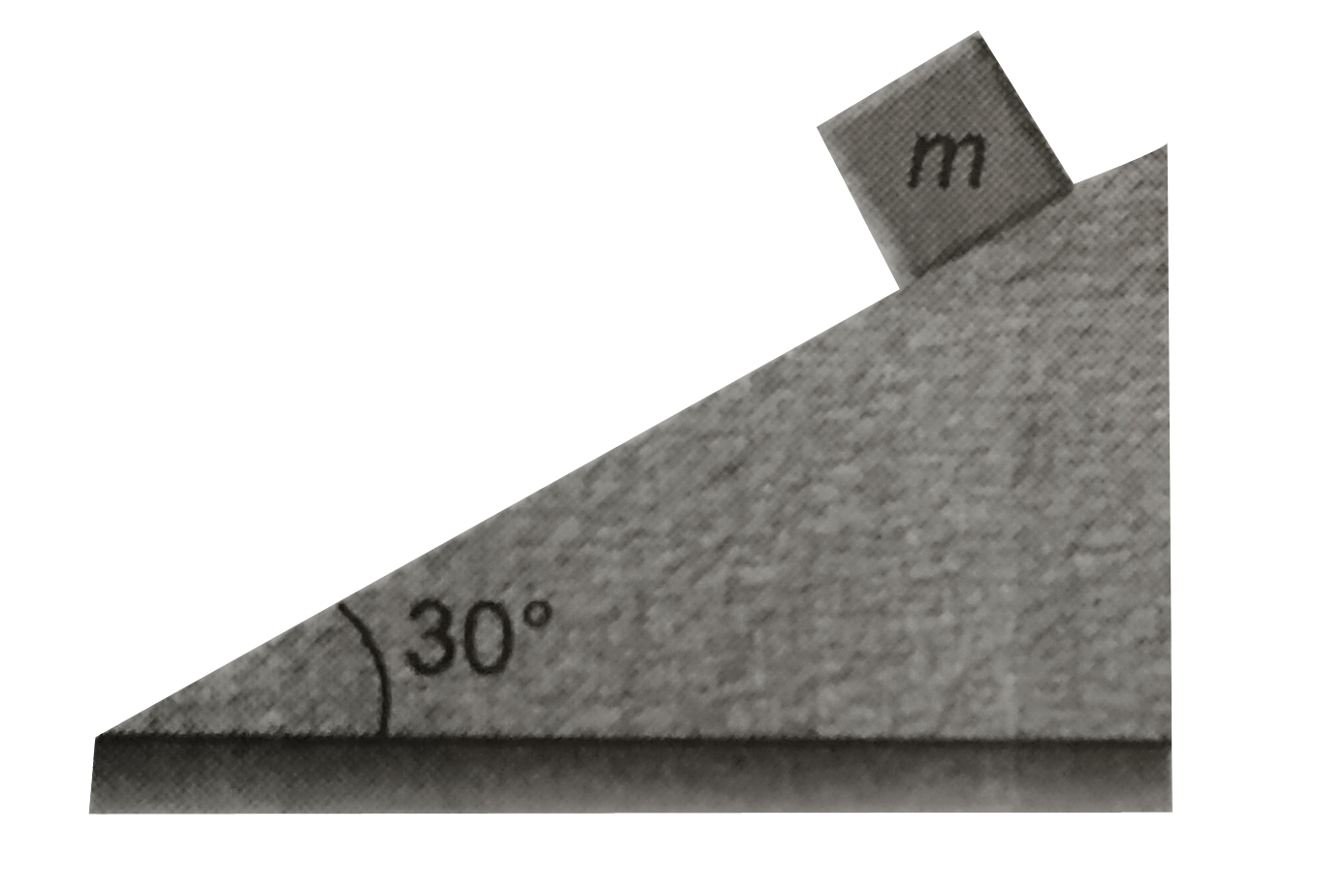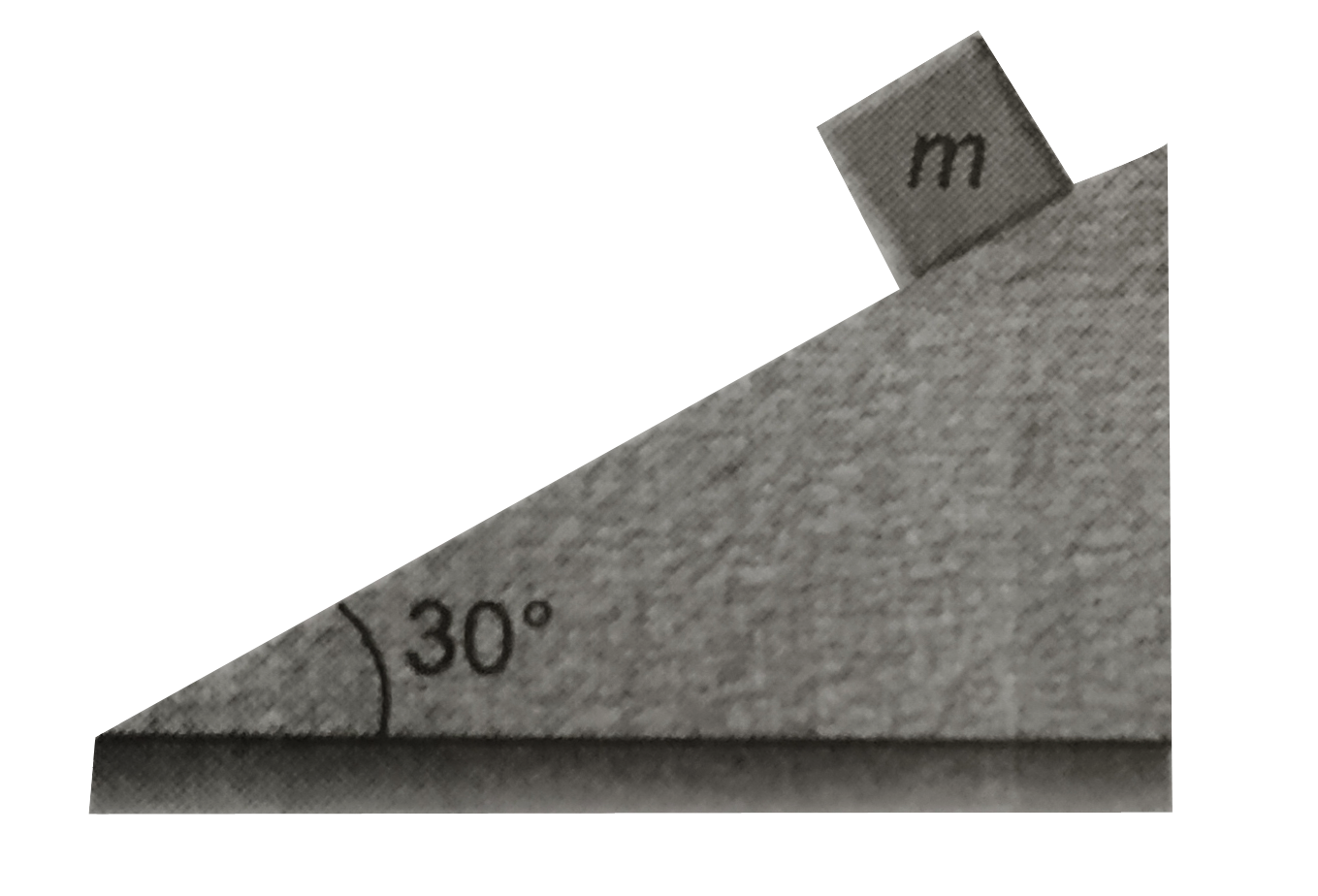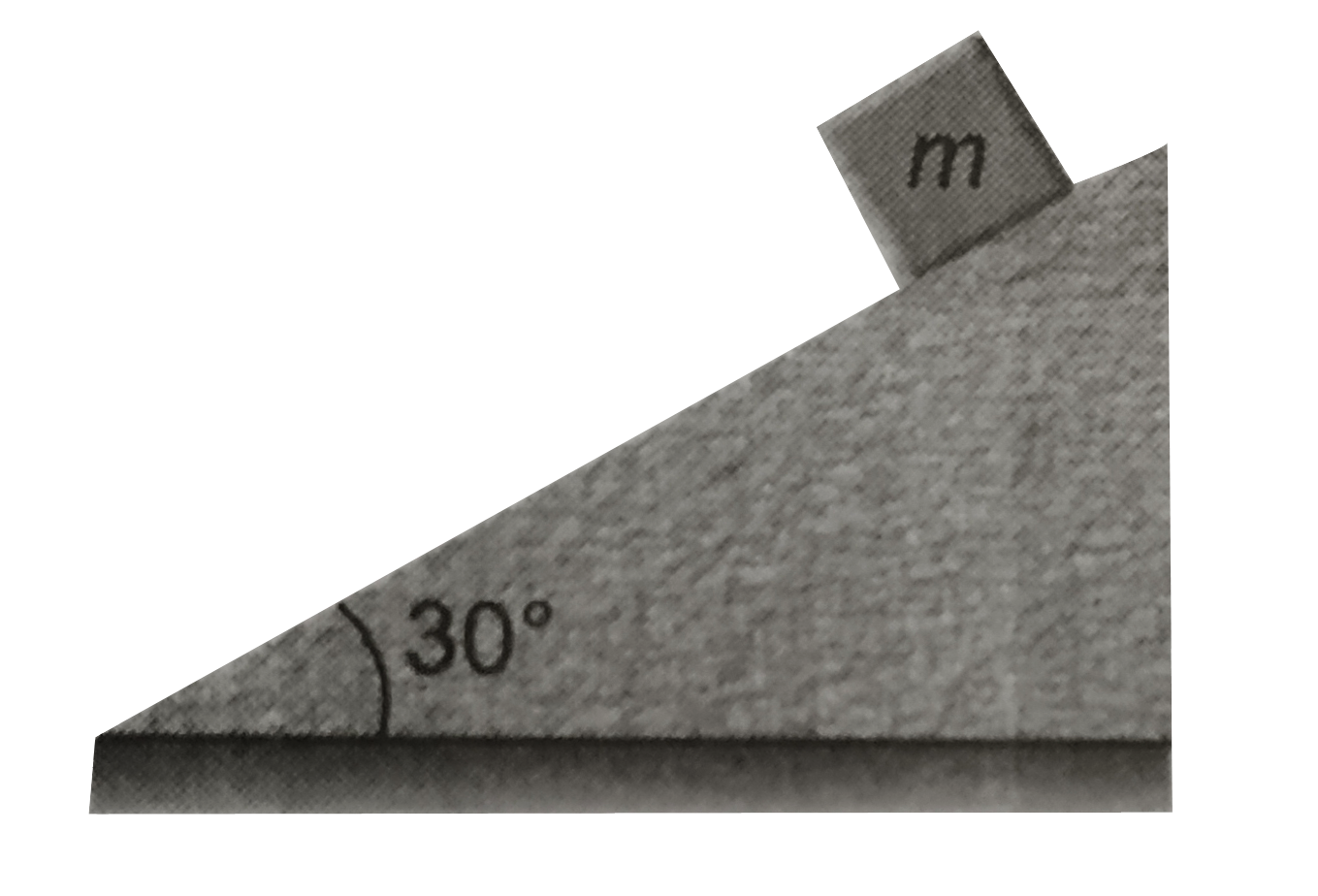Suppose the block of the previous problem is pushed down the incine witas force of 4N. How far will the block move in the first two seconds after starting from rest? The mass of the block is 4 kg.
To solve the problem step by step, we need to analyze the forces acting on the block and calculate the distance it will move in the first two seconds after starting from rest.
Step 1: Identify the Forces Acting on the Block
The forces acting on the block on the inclined plane are:
- The gravitational force (weight) acting downwards: mg
- The normal force R acting perpendicular to the surface
- The applied force F=4N acting down the incline
- The frictional force fk acting up the incline
Step 2: Calculate the Components of the Gravitational Force
The gravitational force can be broken down into two components:
- The component parallel to the incline: mgsinθ
- The component perpendicular to the incline: mgcosθ
Given:
- Mass m=4kg
- Acceleration due to gravity g=10m/s2
- Angle of incline θ=30∘
Calculating the components:
- mg=4×10=40N
- mgsin30∘=40×12=20N
- mgcos30∘=40×√32=20√3≈34.64N
Step 3: Calculate the Normal Force
The normal force R is equal to the perpendicular component of the weight:
R=mgcos30∘=20√3N
Step 4: Calculate the Frictional Force
The frictional force fk can be calculated using the coefficient of friction μ:
fk=μR
Assuming μ=0.11 (from the previous problem):
fk=0.11×20√3≈0.11×34.64≈3.81N
Step 5: Set Up the Equation of Motion
The net force Fnet acting on the block along the incline is given by:
Fnet=Fapplied+mgsinθ−fk
Substituting the values:
Fnet=4+20−3.81=20.19N
Step 6: Calculate the Acceleration
Using Newton's second law F=ma:
Fnet=ma
20.19=4a
a=20.194≈5.05m/s2
Step 7: Calculate the Distance Moved in the First 2 Seconds
Using the equation of motion:
s=ut+12at2
Since the block starts from rest, u=0:
s=0+12⋅5.05⋅(22)
s=12⋅5.05⋅4
s=10.1m
Final Answer
The block will move approximately 10.1 meters in the first two seconds.
---
The forces acting on the block on the inclined plane are:
- The gravitational force (weight) acting downwards: mg
- The normal force R acting perpendicular to the surface
- The applied force F=4N acting down the incline
- The frictional force fk acting up the incline
The gravitational force can be broken down into two components:
- The component parallel to the incline: mgsinθ
- The component perpendicular to the incline: mgcosθ
- Mass m=4kg
- Acceleration due to gravity g=10m/s2
- Angle of incline θ=30∘
- mg=4×10=40N
- mgsin30∘=40×12=20N
- mgcos30∘=40×√32=20√3≈34.64N
The normal force R is equal to the perpendicular component of the weight:
R=mgcos30∘=20√3N
The frictional force fk can be calculated using the coefficient of friction μ:
fk=μR
Assuming μ=0.11 (from the previous problem):
fk=0.11×20√3≈0.11×34.64≈3.81N
The net force Fnet acting on the block along the incline is given by:
Fnet=Fapplied+mgsinθ−fk
Substituting the values:
Fnet=4+20−3.81=20.19N
Using Newton's second law F=ma:
Fnet=ma
20.19=4a
a=20.194≈5.05m/s2
Using the equation of motion:
s=ut+12at2
Since the block starts from rest, u=0:
s=0+12⋅5.05⋅(22)
s=12⋅5.05⋅4
s=10.1m
The block will move approximately 10.1 meters in the first two seconds.
Topper's Solved these Questions
Similar Questions
Two 100 g blocks hang at the ends of a light flexible cord passing over a small frictionless pulley. A 40 g block rests on the block an right and removed after 2 sec.
(a) How far will each block move in the first second after the 40 g block is removed?
(b) What was the tension in the cord before the 40 g block was removed?
(c) What was the tension in the cord supporting the pulley after the 40 g block was removed?
View SolutionA block of mass 2.0 kg is pushed down an inclined plane of inclination 370 with a force of 20N cting parallelto the incline. It is found tht the block moves on the incline with an acceleration of 10ms2. If the blcok started from rest, find the work done a. by the applied force in the first second b. by the weight of the block in the first second and c. by the frictional force acting on the block in the first second. Take g=10ms2.
View Solution
Knowledge Check
A block of mass 2kg is pushed down an inclined plane of angle 37∘ above horizontal with a force parallel to inclined plane. The coefficient of friction is (3)/(4). The block moves 10m in 2 seconds starting form rest. The magnitude of the force is
A10NB12NC24ND34NA man wants to slide down a block of mass m which is kept on a fixed inclined plane of inclination 30∘ as shown in the figure .Initially the block is not sliding .
To just start sliding the man pushed the block down the inclined with a force F. Now , the block starts accelerating. To move it downwards with conatant speed the man starts pulling the block with same force. Surface are such that ratio of maximum static friction to kinetic friction is 2 Now, answer the following questions.

If the man continues pushing the block by force F its acceleration would beAg6Bg4Cg2Dg3A man wants to slide down a block of mass m which is kept on a fixed inclined plane of inclination 30∘ as shown in the figure .Initially the block is not sliding .
To just start sliding the man pushed the block down the inclined with a force F. Now , the block starts accelerating. To move it downwards with conatant speed the man starts pulling the block with same force. Surface are such that ratio of maximum static friction to kinetic friction is 2 Now, answer the following questions.

What minimum force is required to move it up the incline with constant speed?A23mgBmg2C7mg6D5mg6
Acceleration of the block of mass 12kg when it is pushed with a force of 500N as shown is?
View SolutionA block of mass 2 kg is pushed against a rough vertical wall with a force os 40 N. Coefficient of static friction being 05. Another horizontal force is 15 N, is applied on the block in a direction paralle to the wall. Will the block move? If yes in which direction? If no, find the frictional force exerted by the wall on the block.
View SolutionA horizontal force of 4 N is applied to a block of mass 2 kg resting on a frictionless table. What is the acceleration of the block in ms−2 ?
View SolutionA man wants to slide down a block of mass m which is kept on a fixed inclined plane of inclination 30∘ as shown in the figure .Initially the block is not sliding .
To just start sliding the man pushed the block down the inclined with a force F. Now , the block starts accelerating. To move it downwards with conatant speed the man starts pulling the block with same force. Surface are such that ratio of maximum static friction to kinetic friction is 2 Now, answer the following questions.

What is the value of F?
View SolutionA man wants to slide down a block of mass m which is kept on a fixed inclined plane of inclination 30∘ as shown in the figure .Initially the block is not sliding .
To just start sliding the man pushed the block down the inclined with a force F. Now , the block starts accelerating. To move it downwards with conatant speed the man starts pulling the block with same force. Surface are such that ratio of maximum static friction to kinetic friction is 2 Now, answer the following questions.

What is the value of μs, the coefficient of static friction?
View Solution
